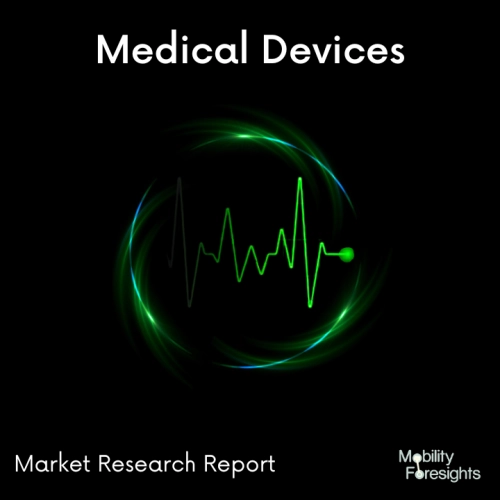
- Get in Touch with Us

Last Updated: Apr 25, 2025 | Study Period: 2024-2030
From a biological, chemical, and mechanical standpoint, various biomedical materials and devices must be rethought for long-term implantations in light of the rising life expectancy. Furthermore, biomaterials with multiple functions that are more effective are the focus of research.
As a result, the appropriate responses ought to address materials that need to be designed for specific applications that are becoming increasingly optimized: implanted electrodes, nanoparticles for medical imaging or cell therapy, diagnostic supports and targeting (biochips), carrier of drugs and active substances, biomaterials to consolidate or replace parts of organs and defective tissues (a variety of medical devices, implants, and prostheses, among others), and so on.
Healthcare uses materials from every category: materials of natural origin, such as ceramics, metal alloys, polymers, and composites; in the form of massive (dense or porous) pieces, deposits, formulations that can be injected, micro/nanoparticles, or any number of other pharmaceutical forms. The materials that come into contact with the body need to be biocompatible, bioactive, and/or bioresorbable at times.
These materials can be synthesized, processed, and characterized using a variety of methods. Understanding and utilizing pathological destruction processes, the interaction between materials and host biological tissues, and controlling their degradation in vivo are necessary for their optimization.

The Global Advanced Healthcare Materials market accounted for $XX Billion in 2022 and is anticipated to reach $XX Billion by 2030, registering a CAGR of XX% from 2024 to 2030.
NEUROTECHNOLOGY - All components developed to comprehend the brain, visualize its processes, and even control, repair, or enhance its functions fall under the umbrella of neurotechnology. Computers, electrodes, or any other device that can be set up to intercept body-wide electric pulses are examples of these components.
Neurotechnology is currently being utilized in advanced healthcare for brain imaging, which involves recording the magnetic fields that are produced within the brain by electrical activity; neurostimulation, which involves stimulating the brain and nervous system to influence brain activity; and in neurodevices, a new technology that uses an implant to monitor or regulate brain activity.
Although the majority of neurodevices are still in the research phase, they have significant potential for treating brain disorders. Neuralink is one such illustration.
Neuralink, founded by Elon Musk, is developing a device that would be inserted into the human brain, record brain activity, and wirelessly transmit this data to a computer. After that, these findings could be analyzed and used to electrically stimulate brain activity. It might be used to treat brain disorders like Parkinson's and Alzheimer's if it works.
Elon Musk has stated that Neuralink intends to begin implanting its chips in humans in 2022, despite the fact that the company has so far conducted tests on animals.
| Sl no | Topic |
| 1 | Market Segmentation |
| 2 | Scope of the report |
| 3 | Abbreviations |
| 4 | Research Methodology |
| 5 | Executive Summary |
| 6 | Introduction |
| 7 | Insights from Industry stakeholders |
| 8 | Cost breakdown of Product by sub-components and average profit margin |
| 9 | Disruptive innovation in the Industry |
| 10 | Technology trends in the Industry |
| 11 | Consumer trends in the industry |
| 12 | Recent Production Milestones |
| 13 | Component Manufacturing in US, EU and China |
| 14 | COVID-19 impact on overall market |
| 15 | COVID-19 impact on Production of components |
| 16 | COVID-19 impact on Point of sale |
| 17 | Market Segmentation, Dynamics and Forecast by Geography, 2024-2030 |
| 18 | Market Segmentation, Dynamics and Forecast by Product Type, 2024-2030 |
| 19 | Market Segmentation, Dynamics and Forecast by Application, 2024-2030 |
| 20 | Market Segmentation, Dynamics and Forecast by End use, 2024-2030 |
| 21 | Product installation rate by OEM, 2023 |
| 22 | Incline/Decline in Average B-2-B selling price in past 5 years |
| 23 | Competition from substitute products |
| 24 | Gross margin and average profitability of suppliers |
| 25 | New product development in past 12 months |
| 26 | M&A in past 12 months |
| 27 | Growth strategy of leading players |
| 28 | Market share of vendors, 2023 |
| 29 | Company Profiles |
| 30 | Unmet needs and opportunity for new suppliers |
| 31 | Conclusion |
| 32 | Appendix |